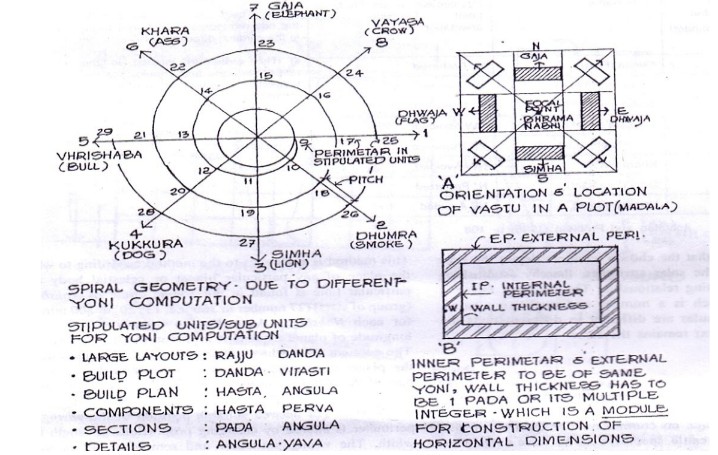Vaastu Shastra
It is known as the science of architectural design that was
practiced in ancient India. It correlates a person or persons and their
habitat or
dwelling. It was used extensively to build temples in the days of
old as also Palaces and princely dwellings. Its laws governed by
directional
alignment and proportionate measurements dictated a certain layout
for a family or a kingdom. The rules if applied in accordance to the
principles
and guidelines blessed the occupants with fortune and longevity,
good progeny, good health as well as mental peace and harmony; all these
being
important ingredients to lead a fruitful life!
Vaastu Shastra depends on the 5 elements (Panch Mahaboot) namely
Vaayu(Air) Jal(Water) Agni(Fire) Prithvi(Earth) and Akash(Ether/Space).
If these align well to a particular premise it can create ‘Heaven’ for the
people living in such an abode. It is said that its originator Lord
Shiva gave this knowledge to Parashar Muni who in turn gave it to Bruhdrath who
passed it on to Vishwakarma. Vishwakarma was supposed to be the best
carpenter who earned great fame and had sons who wrote books on Vaastu Shastra.
Even today he is revered by most carpenters in India especially north
India and on his day they pray to him to gain blessings, expertise and
abundance in their trade.
Shapes of plots and houses play a very important role in Vaastu
Shastra. ‘Vyaghramukhi’ and ‘Gaumukhi’ plots/houses can actually be seen
having
the results that each indicate just by the shape of a house or
plot. The Vargas on the other hand indicates whether a particular city
will be beneficial for a person.
The Vaastu Purush the ruling deity of the plot also needs to be
‘appeased’ to ensure his grace. Certain principles of Vaastu are not
negotiable
like the Brahmasthan. This should never be disturbed under any
circumstances as it is considered the umbilicus of the Vaastu Purush.
Any disturbance
in this area can bring ill health, separation from family and
sometimes even catastrophic results like terminal illnesses.
When analyzing a premise certain directions are allocated to each
room in a household. Eg. Main door, Kitchen, bedrooms storage etc… These
different
directions each have a ruling deity/element that includes Ishaan or
NE the abode of the Gods which is ruled by Shiva, East is ruled by
Indra, SE or
Agneya is ruled by the element Fire, South is ruled by Yama who is
the son of The Sun, SW is ruled by Nairutya, W is ruled by Varun the
Lord of the
seas, NW or Vayavya is ruled by Vayu(Air/Wind) and lastly North is
ruled by Lord Kuber and is also known as the Kubersthan. The central
portion of
the house is known as the Brahmasthan. However being a practitioner
of both Vaastu and Feng Shui I would recommend that one go to a
qualified professional
for a detailed analysis rather than rely on trial and error
methods.
In addition to the above the most important detail before doing
anything is the ground breaking ceremony or the Khaat Mahurat; in other
words
laying the foundation. This is a crucial part of Vaastu for a
bungalow/apartment building or any other premise. Along with these some
astrological
calculations taking into consideration a person birth details aid
in getting one desired results.
Before entering a new home a ‘Grah Pravesh’ puja is usually done to
ensure that the occupants have the all the blessings from the Universe.
To get
the best one needs to find a benefic time and date to enter the
house. There are a few rituals attached to the ‘Graha Pravesh’ before
and at the
actual entering ceremony.
Although Vaastu cannot be fully applied to a vertical residence
as it was made more for horizontal structures one can still avail some
of its benefits for modern living.

